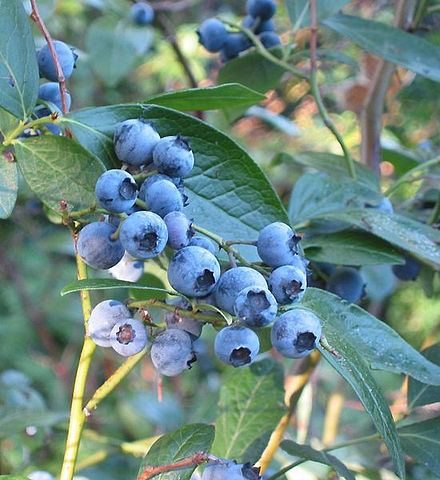Vaccinium corymbosum, commonly known as Highbush Blueberry, a delicious and versatile native shrub prized for its edible berries.
General Plant Information:
•Botanical Name: Vaccinium corymbosum
•Common Name: Highbush Blueberry
•Native Range: Indigenous to eastern North America, including Florida, Highbush Blueberry thrives in a variety of habitats, from woodlands and forests to wetlands and upland areas.
•Habitat: Preferring acidic, well-drained soils in sunny to partially shaded locations, Vaccinium corymbosum can be found in both upland and lowland habitats, where it adds beauty and ecological value to the natural landscape.
•Size: This medium to large-sized deciduous shrub typically reaches heights of 6 to 12 feet, with a spreading habit and arching branches that create a graceful silhouette in the garden.
Flowering and Fruiting:
•White Flowers: Vaccinium corymbosum blooms in spring, producing clusters of small, bell-shaped, white flowers that cover the branches and attract pollinators such as bees and butterflies to the garden.
•Edible Berries: After flowering, Highbush Blueberry produces clusters of delicious blueberries that ripen in summer to early fall. The berries are sweet and flavorful, rich in antioxidants and vitamins, and are enjoyed fresh or used in jams, jellies, pies, and other culinary delights.
Maintenance:
•Sunlight: Thriving in full sun to partial shade, Highbush Blueberry adapts well to a range of light conditions, making it suitable for various garden and landscape settings.
•Watering: While tolerant of drought once established, regular watering during dry spells encourages optimal growth and fruit production, especially during the establishment period.
•Pruning: Light pruning may be required to shape the shrub, remove dead or diseased branches, and improve air circulation, promoting overall health and vigor.
Ecological Significance:
•Wildlife Habitat: Vaccinium corymbosum provides habitat and food for a variety of wildlife species, including birds, mammals, and insects, enhancing biodiversity and ecosystem resilience in Florida’s natural habitats.
•Soil Stabilization: With its extensive root system and dense growth habit, Highbush Blueberry helps stabilize soils and prevent erosion in upland and wetland areas, making it a valuable addition to restoration projects and natural landscapes.
•Ornamental Value: In addition to its ecological importance, Highbush Blueberry is highly valued for its ornamental beauty, serving as a focal point in garden landscapes and adding seasonal interest with its flowers, fruit, and attractive foliage.
Incorporating Vaccinium corymbosum into your landscape not only adds beauty and delicious berries but also supports wildlife habitat conservation.
top of page
$30.00Price
Sales Tax Included |
Customers Also View
Your content has been submitted
Your content has been submitted
Your content has been submitted
Your content has been submitted
bottom of page



















